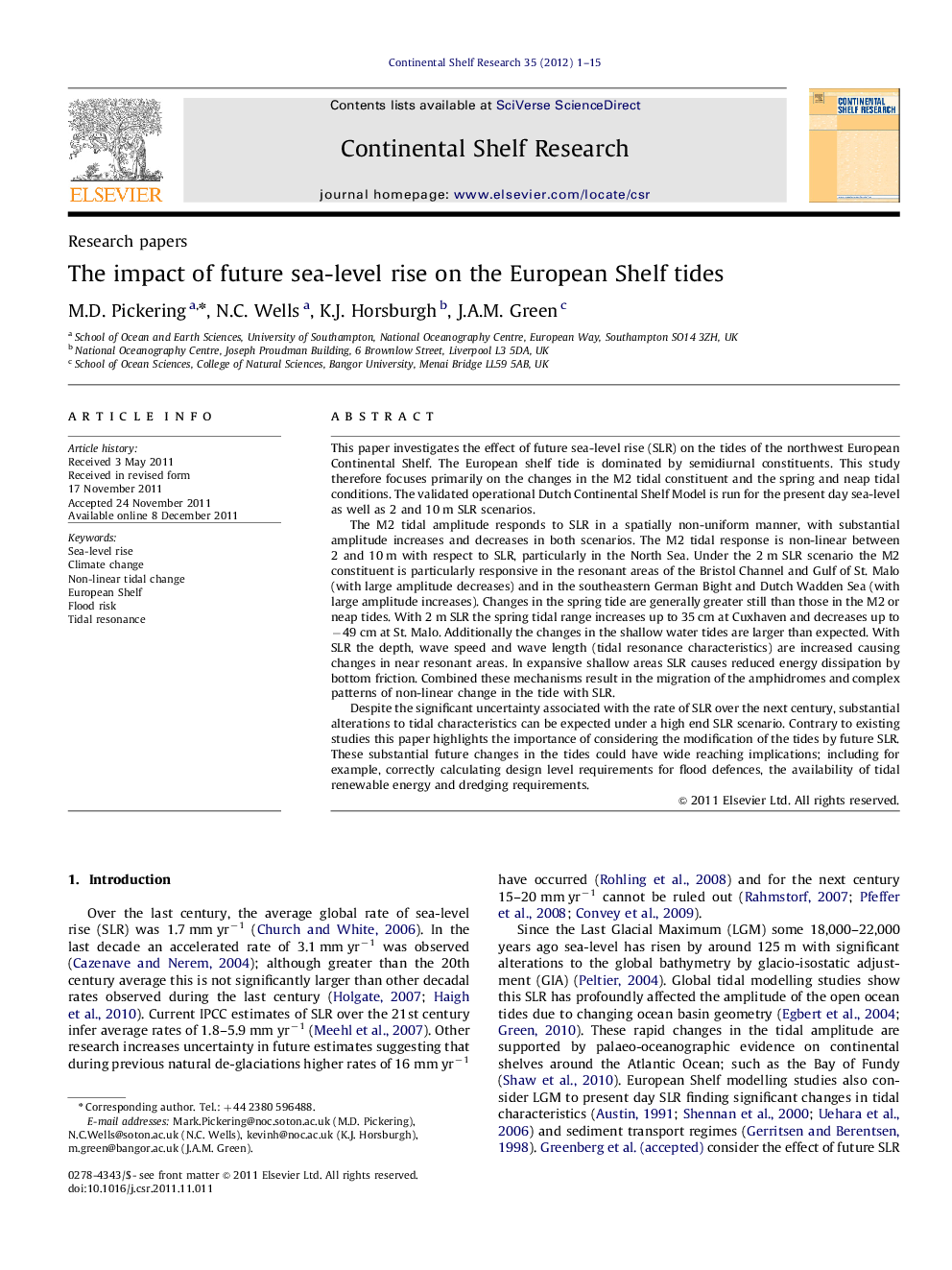| Article ID | Journal | Published Year | Pages | File Type |
|---|---|---|---|---|
| 4532503 | Continental Shelf Research | 2012 | 15 Pages |
This paper investigates the effect of future sea-level rise (SLR) on the tides of the northwest European Continental Shelf. The European shelf tide is dominated by semidiurnal constituents. This study therefore focuses primarily on the changes in the M2 tidal constituent and the spring and neap tidal conditions. The validated operational Dutch Continental Shelf Model is run for the present day sea-level as well as 2 and 10 m SLR scenarios.The M2 tidal amplitude responds to SLR in a spatially non-uniform manner, with substantial amplitude increases and decreases in both scenarios. The M2 tidal response is non-linear between 2 and 10 m with respect to SLR, particularly in the North Sea. Under the 2 m SLR scenario the M2 constituent is particularly responsive in the resonant areas of the Bristol Channel and Gulf of St. Malo (with large amplitude decreases) and in the southeastern German Bight and Dutch Wadden Sea (with large amplitude increases). Changes in the spring tide are generally greater still than those in the M2 or neap tides. With 2 m SLR the spring tidal range increases up to 35 cm at Cuxhaven and decreases up to −49 cm at St. Malo. Additionally the changes in the shallow water tides are larger than expected. With SLR the depth, wave speed and wave length (tidal resonance characteristics) are increased causing changes in near resonant areas. In expansive shallow areas SLR causes reduced energy dissipation by bottom friction. Combined these mechanisms result in the migration of the amphidromes and complex patterns of non-linear change in the tide with SLR.Despite the significant uncertainty associated with the rate of SLR over the next century, substantial alterations to tidal characteristics can be expected under a high end SLR scenario. Contrary to existing studies this paper highlights the importance of considering the modification of the tides by future SLR. These substantial future changes in the tides could have wide reaching implications; including for example, correctly calculating design level requirements for flood defences, the availability of tidal renewable energy and dredging requirements.
Graphical abstractFigure optionsDownload full-size imageDownload as PowerPoint slideHighlights► European Shelf M2 tidal amplitude has a spatially non-uniform, non-linear response to sea-level rise. ► M2 amplitude change non-linear with respect to sea-level rise at 28 of 32 ports ► With 2 m sea-level rise the largest M2 amplitude decrease is in the resonant Bristol Channel. ► The largest M2 amplitude increase with 2 m sea-level rise is in the southeast German Bight. ► Amphidromic points migrate with sea-level rise.
